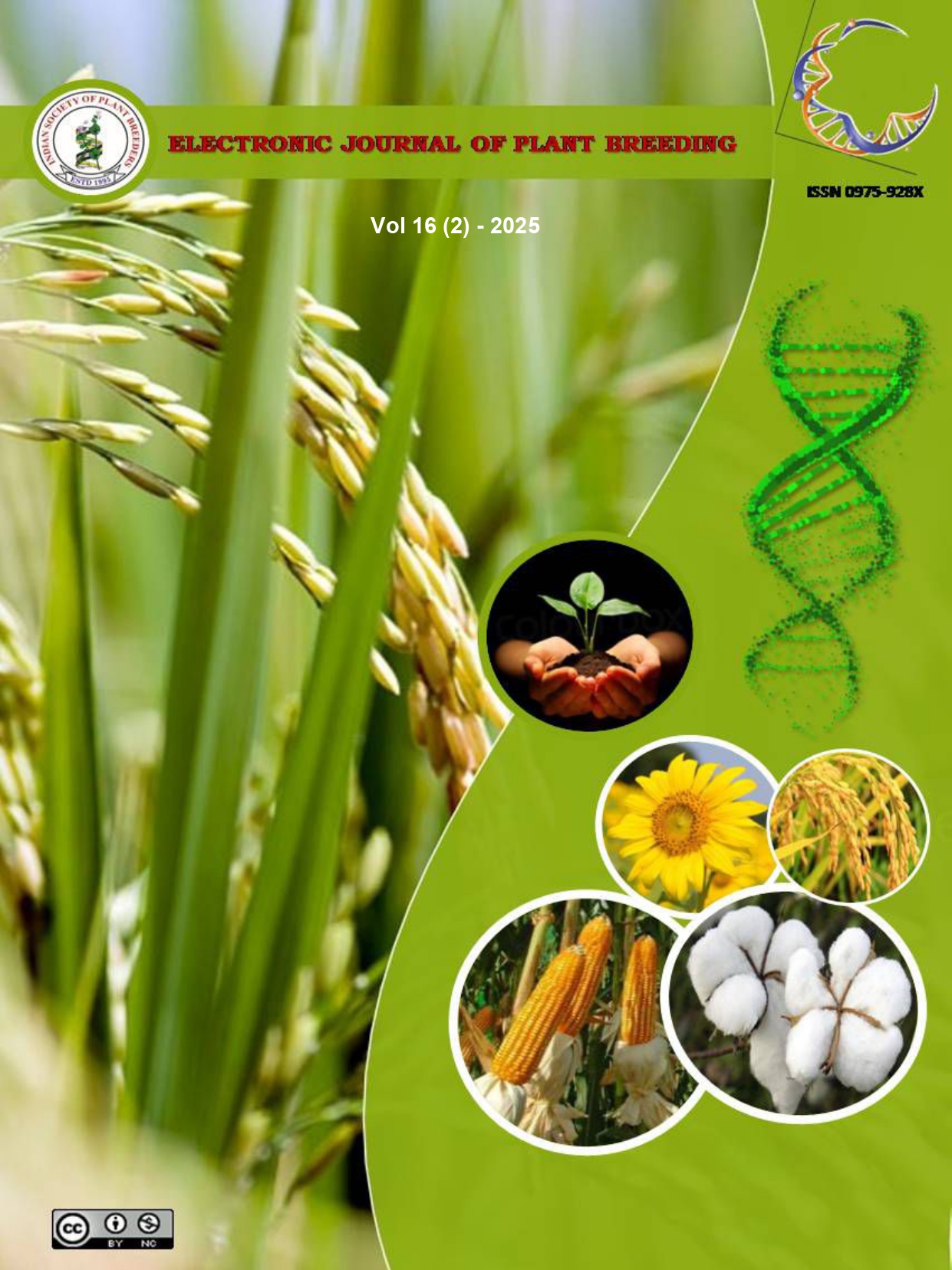Stability analysis in rice (Oryza sativa L.) through AMMI and GGE biplots
DOI: 10.37992/2025.1602.021
Abstract
Rice (Oryza sativa L.) is a major staple known for fulfilling our dietary requirements. Continuous breeding efforts for widening its genetic base are essential to develop climate-resilient varieties in the future. In view of this, a stability analysis among 81 genotypes comprising of traditional landraces and released varieties was done to evaluate their yield-attributing traits across three seasons namely, Kharif 2022, Rabi 2023, and Kharif 2024. The AMMI and GGE biplot exhibited seven genotypes viz., KRG 45 (Sithiraikar), KRG 33 (Kulipadichan), KRG 21 (JGL), KRG 40 (Norungan), KRG 46 (Sivapu Kavuni), KRG 2 (Aanaikomban) and KRG 12 (CO 51) as the stable genotypes with high yield across seasons. Considering the per se performance for yield, KRG 2 and KRG 46 had the highest yield across seasons than the two checks viz., CO 51 and CO 55. Among the three seasons, Kharif 2022 was found to be ideal and exhibited a favorable influence on the genotypes for yield. Since, the three seasons were found to interact independently on the genotypes, they could be used to evaluate the upcoming breeding trials for testing stability in rice. The identified stable genotypes from this study could be advanced for further evaluation to develop climate-resilient rice varieties in future.
Keywords: Rice landraces, AMMI, GGE biplot, yield attributing traits
Stability analysis in rice Oryza sativa L. through AMMI and GGE biplots
. 2025. Electronic Journal of Plant Breeding, 16 2, 187-196. Retrieved from https://ejplantbreeding.org/index.php/EJPB/article/view/5324It is certified that:
- The corresponding author is fully responsible for any disputes arising due to the publication of his/her manuscript.
- The article has been seen by all the authors who are satisfied with its form and content.
- The sequence of names of authors in the by-line is as per their relative contribution to this experiment, giving due credit to all scientists who made notable contribution to it.
- All the authors fully understand that inclusion of any other co-authors or exclusion of any co-authors is not possible once the article has been submitted to the journal.
- The corresponding author takes full responsibility for this article.
- The address of the organization where the research was conducted is given.
- The article is exclusive for this journal, and the results reported here have not been sent (and will not be sent during its consideration by this journal) for publication in any other journal.
- Authors agree to abide by the objective comments of referees and do agree to modify the article into a short note as per the recommendation, for publication in the Electronic Journal of Plant Breeding.
- If published in Electronic Journal of Plant Breeding, the copyright of this article would vest with the Indian Society of Plant Breeders, who will have the right to enter into any agreement with any organization in India or abroad engaged in reprography, photocopying, storage and dissemination of information contained in it, and neither we nor our legal heirs will have any claims on royalty.



